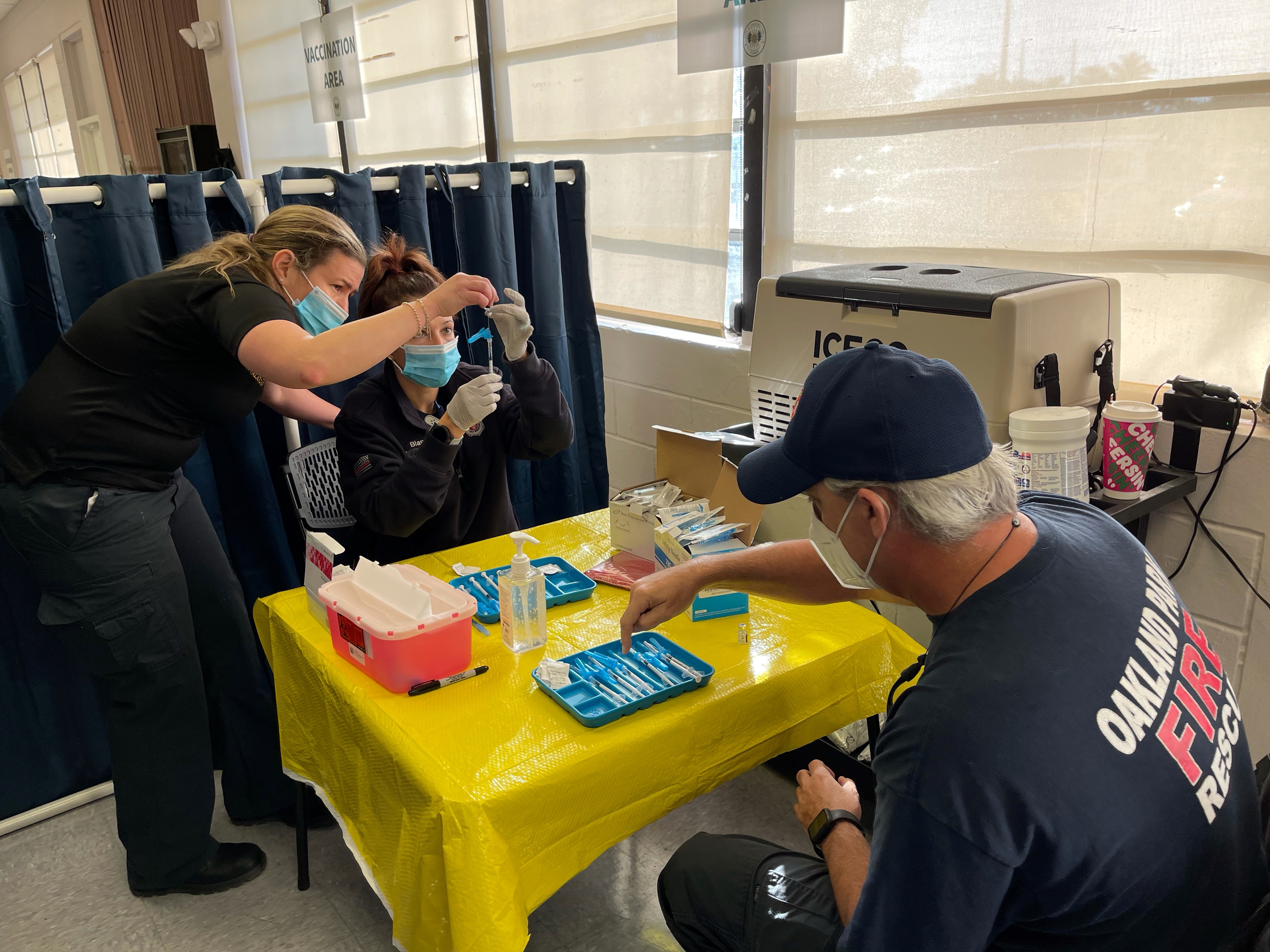
COVID-19 Vaccination Site for Vulnerable Seniors
Oakland Park, Florida
David Hebert ICMA-CM, City Manager
Jennifer Frastai, Assistant City Manager
Andrew Thompson, Chief Financial Officer
After nine months of tragedy caused by the COVID-19 pandemic, the approval of a vaccine offered a glimmer of hope to thousands of Floridians. Websites were launched o schedule vaccine appointments, and Florida began to administer doses in December 2020.
Unfortunately, many vulnerable seniors living in Broward County had no hope of getting an appointment. They did not have a computer or internet access or lacked the skills to navigate an online registration system. Some did not speak English; many did not own a car; and some had physical constraints that limited their mobility.
Reports mounted of crashing websites and vaccine sites running out of vaccine. Residents started to lose hope, and Oakland Park feared for its seniors. The city commission and city manager were determined to find a solution, and their determination led to the opening of a point of distribution (POD) vaccination site to remove the barriers that prevented vulnerable seniors from getting vaccinated.
A critical objective was to acquire access to vaccines. With the support of the city commission, the city manager accomplished this through an arrangement with the Florida Department of Health (DOH): Oakland Park would operate a site for vulnerable seniors if the DOH would supply vaccines.
The Oakland Park site opened on January 9, 2021. To identify and contact the target audience, staff and volunteers made calls from existing vulnerable registry lists, contacted nonprofit organizations, mailed letters to seniors who received exemptions from the county property appraiser, and distributed bilingual flyers at churches and community centers.
As volunteers and staff contacted seniors, they scheduled appointments two to four days in advance or placed them on
a waitlist. The DOH vaccine supply was never guaranteed, so appointments were scheduled within a small window to avoid the risk of cancelations. People on the waitlist were called to fill vacancies from same-day cancelations, ensuring that every dose was used. At the peak, 3,000 people were waiting for appointments. The city also arranged transportation if needed.
Staff identified a city-owned community center that was large enough to accommodate CDC social distancing guidelines and that had ample parking and restrooms. City employees and volunteers staffed the site. Paramedics prepared and administered the vaccines and returned vials and paperwork to the DOH. Contract nurses were hired periodically to fill staffing shortages.
The city continuously refined logistics, improving operations and increasing the number of daily doses from 54 to 144. Once the POD was operating smoothly, Oakland Park offered 20 appointments each day to other Broward County cities. When the waitlist was exhausted and vaccines became widely available, the city closed the site and then reopened for booster shots. The collective community effort achieved measurable results:
- Vaccines administered: 9,570.
- Waitlisted people served: All 3,000+.
- Volunteers: More than 14.
- Broward cities whose residents served at the POD: 10. The Oakland Park POD was the first city-run vaccine site in
The Oakland Park POD was the first city-run vaccine site in Broward County, and Oakland Park was the first city in the county to request vaccines from the DOH specifically for vulnerable seniors. The city shared what it learned by conducting onsite tours and creating a PowerPoint and videos to walk other communities through the step-by-step process of operating a vaccine site. Six cities used the model to set up their own POD. The educational resources were shared with local, regional, and statewide contacts, as well as stakeholders at the national level, including ICMA and the U.S. Conference of Mayors. \
The Oakland Park POD would not have opened without a partnership among the city manager and staff, elected officials, the DOH, nonprofits, and volunteers—all of whom came together and literally saved lives. Its success is a shining example of the power of local governments serving their communities in times of emergency.
